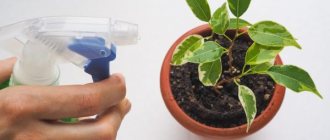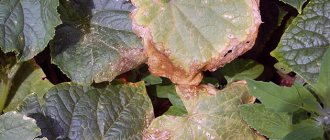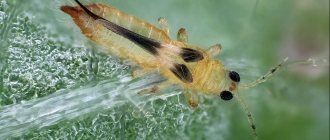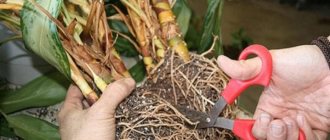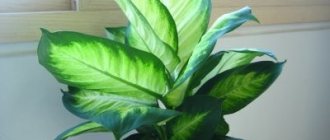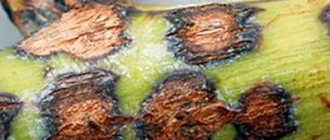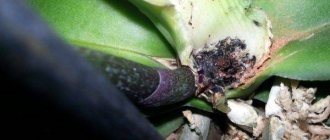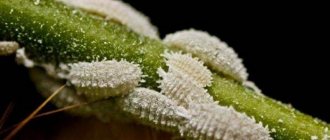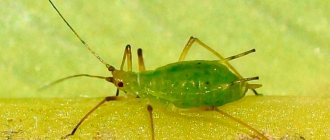Features of flower growth
Geranium can be called an unpretentious flower ; it loves a lot of sun, warmth and soil that allows air and water to pass through. The content conditions are as follows:
- good watering in summer and moderate in winter;
- bright sunlight, but without direct rays;
- warm air;
- loose, well-drained soil;
- moderate fertilizing with nitrogen-phosphorus-potassium fertilizers;
- slightly acidic soil;
- pruning and pinching to form a bush.
Insect pests and measures to combat them
If not properly cared for, geranium weakens and is easily exposed to various parasites. To prevent this, you need to know which insects can destroy a plant and how to deal with them.
Whitefly
Very dangerous for geraniums are small white midges called whiteflies. Insects live on the lower part of the leaf. If you detect uninvited guests, you need to take immediate action:
- The first step is to remove the leaves on which the largest number of parasites are located.
- The next step is treatment with an insecticide. Treatment is carried out three times with an interval of 7 days. You can use Aktara or Confidor. If you chose the second product, then you should know that it has a pungent odor. In order not to harm your health, it is better to carry out the treatment outdoors or in a well-ventilated area.
Aphid
The leaves of the flower began to curl - perhaps this is the work of aphids. These are pests. Which feed on plant sap, causing them to become lethargic and weak. The leaves on which aphids live curl and dry out very quickly.
Aphids are insects that reproduce very quickly. If action is not taken immediately, then within a few days these parasites can infest the entire plant. Which will ultimately lead to his death.
To get rid of aphids, you need to remove the parts of the plant on which the insects live and treat it with Fitoverm or Mospilan.
Spider mite
Spider mites are very easy to spot. If cobwebs and white dots on the leaves appear on the plant, then this is certainly the work of a spider mite. Under the influence of the parasite, the leaves begin to curl inward.
The best conditions for tick reproduction are dry air. The danger of such a resident is that he is capable of transmitting infectious diseases.
To get rid of the uninvited guest, you need to remove the parts on which it lives and treat the plant with an insecticide.
Termites
- To destroy termites, you can use chemicals, for example, Messenger or Marathon. They are also used to prevent the appearance of these parasites.
- You can also spray with aspirin solution. To prepare the solution, you need to dissolve one tablet in eight liters of water.
Nematodes
They are the smallest and most dangerous worms . They destroy the plant from the inside by eating its roots.
As a result, nodules appear on the rhizomes due to exposure. Unfortunately there is no treatment.
A plant infected with nematodes must be destroyed.
Root mealybug
The ideal habitat is waterlogged soil. The root bug feeds on the roots, which leads to a stop in the development of geraniums.
- In case of minor infection, it is enough to wash the roots and remove the damaged parts.
- Next, the plant is transplanted into new soil, which is pre-treated with an insecticidal agent.
- Watering with Aktara will be useful.
In case of serious infestations, the plants cannot be saved.
We invite you to watch a video about geranium pests:
Diagnosis of the problem
Small light spots appeared
Clear yellow spots with smooth edges on the front side of the sheet, and on the inside a brown coating is rust, which often appears if the air is warm with high humidity.- A small fluff on the leaves, light spots, while the plant becomes lethargic and unattractive with dark formations on the leaves - this is Botrytis, a parasitic fungus. The disease appears from excess humidity.
- A ring pattern on pale green spots that gradually merge, while the plant stops growing and developing, flower stalks do not form - this is ring spotting. The cause of this disease is nematodes living in the soil.
- Another serious infection is the appearance of spider mites. Yellow spots appear on the leaves, they gradually begin to fall off, while the plant seems to be entangled in a small, barely noticeable web.
Brown drawings
- Brown spots appeared on the lower leaves - this is gray rot; if the plant is not treated, then over time the spots become covered with a gray coating, which tightly covers first the geranium leaves, then the stem.
- If a light spot appears in the middle of the brown spots, then this is Alternaria blight. The disease manifests itself as follows: the leaves turn yellow and dry out, while the plant stops gaining color. If the air humidity is high, then all parts of the geranium become covered with a velvety coating.
- Red-brown spots indicate that the plant is in direct sunlight, while the air temperature is much lower than optimal (why do geranium leaves turn red?).
Diseases, their photos and methods of treatment
Blackleg
This disease is a fungal disease. The damage starts from the stem. A black spot appears on it, which very quickly spreads throughout the entire stem. As a result, it breaks and the plant dies. The cause of the disease may be:
- lack of drainage;
- excessive watering;
- heavy soil.
Blackleg cannot be treated. When the first signs of disease are detected, you need to cut off the top of the plant as quickly as possible so that it can be rooted and a new one can be grown. The rest of the geranium must be destroyed.
Gray rot
The disease manifests itself as weeping brown-gray spots that cover the stem and leaves of the plant. The development of the disease occurs due to:
- high nitrogen content;
- soil that is too wet;
- high air humidity;
- stuffiness.
Treatment is carried out with fungicides. For example, “Fundazol” or “Vitaros”. These drugs are also used to prevent the disease. It is carried out in the process of cuttings. The cuttings must be placed in a solution made on the basis of these preparations.
Alternaria blight
The external manifestation of the disease is the formation of spots with a white coating on the lower part of the leaves. As a result, the leaves curl, wither, turn yellow and fall off. The cause of the disease is excessive humidity.
To cure a plant, you need to remove the affected leaves and treat the plant with Ridomil.
Verticillium wilt
Due to lack of moisture and elevated air temperatures, verticillium wilt begins to develop. A sign of the disease is yellowed or wilted leaves and inflorescences.
To restore the plant to health, it is necessary to remove damaged parts of the plant and organize proper watering. But under no circumstances should you allow it to overflow.
To prevent the disease, treatment with Trichodermin is carried out.
Rust
The symptom of the disease is the formation of light spots with dark red dots. If you look closely, you can find a brown coating underneath.
In case of weak infection, when a small area of the plant is damaged, you need to remove the infected part and treat the plant with a fungicidal agent. Treatment is carried out twice with an interval of two weeks.
If this does not help, then you need to cut off part of the geranium for cuttings, and destroy the remaining plant.
Late blight
If you find limp and curled leaves or dark sunken spots on your pelargonium, then your flower is suffering from late blight. If the plant is located in a damp room, then a white fluffy coating may form on these spots. It is almost impossible to detect the disease in the early stages, so most often the flower cannot be cured.
If a small area is infected, it must be removed and the plant transplanted into new soil. As a preventative measure, the following treatments are carried out:
- "Ridomil".
- "Profit Gold".
- "Previkur."
Bacterial spot
It primarily affects the lower parts of the leaves. At first, barely noticeable spots appear on them. After a few days they become clear and the leaves begin to curl. Next, necrosis develops, due to which the leaves dry out and fall off. Fungicides are used for treatment.
Dropsy
If watering is not organized correctly, the plant may suffer from dropsy. This happens when very dry leaves are poured generously. The mouths of the leaves, located on their back side, fail and crack. Then they become callous and look like scars.
To save the plant, you just need to remove the damaged leaf plates, and in their place new leaves will grow that will not suffer from the disease.
Causes of leaf blade disease
In most cases, improper care of geraniums leads to changes in leaf color.
For example, yellow formations may appear on leaves if errors are made in care:
- lack of moisture - the leaves begin to turn yellow at the edges;
- excessive watering - against the background of lethargy of the geranium, yellowness appeared;
- poor lighting - leaves can not only turn yellow, but also fall off.
Brown spots on the leaves of a flower can appear not only from diseases, for example:
the flower grew, and the flowerpot became too small for it;- the soil in the hill is poorly drained;
- constant drafts;
- lack of light and heat;
- excess nitrogenous fertilizers;
- planting outdoors without pre-cultivation of the soil.
In addition, there are insects such as:
- whitefly;
- aphid;
- mealybug.
They cause various spots to appear on the leaves.
You can learn more about common geranium leaf diseases here.
We grew up. What's next?
Pelargoniums are wonderful companions both at home and in the garden, as they are powerful natural repellents and successfully drive away flies, as our great-grandmothers knew very well.
With the arrival of stable warmth, pelargoniums can be planted in open ground - there the plants will unfold in all their glory. Mature home geraniums do not need to be disturbed by replanting, but can be cut from them as many cuttings as you like, each of which will develop into a large branched bush during the gardening season. In the fall, the most successful plants can be returned to the apartment, or cuttings can be taken from them and rooted in the apartment.
This “geranium conveyor belt” can be endless, which cannot be said about propagation by one’s own seeds. If you have several varieties, they will certainly be cross-pollinated, and the seeds resulting from such crossing will be unpredictable in terms of maintaining varietal characteristics.
Pure varieties of pelargonium with the declared characteristics of color, size, and degree of flower terry can only be obtained from the seeds of the originator. These are always in our catalog.
By the way, be sure to tell us in the comments about your pelargoniums and how to propagate them. And take a few minutes for a short master class from our pelargonium specialist - there is a lot of useful information and an overview of the most popular varieties
How to get rid of the problem - detailed instructions
First of all, the flower is quarantined so that it does not infect other crops in the apartment. A careful examination of the roots, soil, leaves, and stems will help you make the correct diagnosis.
Rust
If your geranium is affected by rust, then you should take the following measures::
- move the flowerpot with the plant to a dry and cool place;
- reduce watering to a minimum;
- diseased leaves should be cut off;
- treat geranium with Topaz - a special preparation.
It is worth understanding that a flower can be cured only at the initial stage of infection.
Fungus
If geranium is infected with Botrytis fungus, you will have to act as follows:
- cut off all affected areas;
- treat with systemic fungicides;
- reduce watering;
- loosen the soil.
Ring spot
If a flower is affected by this disease, it cannot be cured.
As soon as you notice the first symptoms of ring spot, destroy the plant and the soil in which it was located.
Spider mite
To get rid of spider mites, you need to put in a lot of effort. It is worth noting that this parasite is a microscopic animal, so it is useless to use insecticides . The algorithm of actions is as follows:
- Give the plant a warm shower with laundry soap - this process destroys 50% of the entire parasite population.
- Wash everything that was near the plant, disinfect the windowsill and window, wash the curtains.
- Water the plant and pack it in a plastic bag for 3 days. The tick does not tolerate high humidity.
All these actions will help only at the initial stage of the disease; if the web has entangled the entire plant, it will have to be destroyed.
Alternaria blight
Often a plant becomes infected with this disease through the soil ; it can be cured as follows:
- change the soil in the flowerpot;
- treat geranium with Ridomil Gold or Skor;
- ventilate the room daily;
- loosen the soil;
- use the optimal humidification regime.
Insects can be removed in the following ways:
- Wash the flower with soapy water.
- Wipe with a cotton swab soaked in an alcohol solution.
- Treat with medications.
How to sow pelargonium seeds at home
In order not to waste extra time on preparation, you can order from us and combine a mini-greenhouse, any ready-made soil, superphosphate and a phyto-lamp into one order with seeds. This way you will save on delivery and get a starter kit that can be used repeatedly to grow healthy and strong seedlings of any crop.
Sowing rules:
- It is better to soak the seeds overnight using a cotton pad or napkin.
- The swollen seeds should be distributed over the surface of the substrate, sprinkled with a centimeter layer of soil and properly moistened with a spray bottle.
- The lidded container with seeds should be placed in a dark and warm place before germination - the optimal temperature during this period is +21-23 degrees, but not higher than +25.
- After the shoots emerge, the lid or film must be removed and the container moved to a well-lit windowsill, or better yet, under a phyto-lamp.
- The temperature needs to be reduced to about +15 degrees, which can be easily done by ventilation on the window.
- After the appearance of 3 true leaves, the seedlings need to be picked - add superphosphate to the soil for the picking cups according to the instructions, which is needed for the proper development of plants and abundant flowering in the future.
Congratulations, you have grown your first pelargoniums from seeds! All of the above applies to zonal pelargoniums. Ampel varieties require slightly different agricultural technology: the temperature for both germination and pickled seedlings should be 3-5 degrees lower. Temperature shock in seeds and small seedlings of ivy-leaved pelargonium occurs at a temperature of +22 degrees.
Preventive measures
Geranium is resistant to infections, but preventative measures will help avoid problems. Observe the behavior and condition of the plant , and it is worth maintaining:
- optimal soil moisture;
- temperature regime comfortable for the plant;
- good lighting;
- correct and timely feeding.
Typical mistakes in caring for geraniums lead to loss of pigment or leaf disease. Read our articles about why a flower’s leaf blade curls or turns white and how to solve the problem.
Despite the fact that geranium is an unpretentious plant, it needs to be looked after and constantly taken care of. If you are vigilant, you can easily avoid illness or treat the infection at an early stage.
When to sow pelargonium seeds
You can sow all year round, but it’s best before winter, when we can easily control the lighting and temperature, which is important.
Our catalog contains perhaps the largest collection of pelargonium seeds: choose zonal varieties with huge inflorescences or chic hanging pelargoniums for flowerpots and hanging baskets.
How to properly care for it to bloom?
In order for geranium to bloom, it is necessary to create certain conditions, maintain them and carefully monitor the health of the flower. We present tips for beginners on how to care for a plant at home in a pot so that it blooms?
- Geranium likes to be cramped, so in order for it to produce buds you need to transplant it into a small pot. As soon as the root system fills almost the entire space of the pot, the geranium will be able to devote all its energy to flowering.
- To grow geraniums, you should choose soil suitable for flowering plants.
- Flowering can be achieved with regular fertilizing. Preference should be given to potash fertilizers. It is also sometimes advisable to apply nitrogen fertilizing. It is better not to use organic matter, it can harm the plant.
- Annual pruning has a beneficial effect on the formation of buds. This way you can provide additional strength for flowering.
Medicinal preparations for geranium
The following medications can be used to combat geranium problems:
- Aspirin. It can be used when insects are detected. To prepare the solution you will need one tablet of medicine and 8 liters of water. The resulting composition must be sprayed on geranium leaves. The procedure can be repeated after 3 weeks.
- Marathon. This drug is also intended to combat insects, but they need to be watered in the soil. The procedure can be carried out a few days after planting.
- Messenger.Used to increase the plant’s own immunity.
- Monterey. It is sprayed onto plants when traces of caterpillars are found on it.
Geranium has long been considered one of the most useful plants. The medicinal flower is capable of killing a huge number of bacteria and treating a variety of diseases, from a common runny nose to purulent wounds. That is why high-quality care will allow its owner to create a healing atmosphere in his home.
Useful!5Not very useful!3
Publications on the topic:
- Kalanchoe in a pot: replanting, home care
- What to do when Kalanchoe does not bloom at home?
- Are the leaves of indoor geraniums turning yellow? Find out why this happens and what to do about it!
How to feed and fertilize geraniums correctly
This crop rarely needs replanting and can grow in one pot for more than one year. Fertilizing is done with liquid universal fertilizer for flowering crops once every 2-3 weeks. The solution must be prepared according to the instructions on the package.
Geranium feeding technology:
- mineral fertilizers (potassium and phosphorus) are added 2 times a month. These microelements prolong flowering and strengthen the crop;
- watering with a heteroauxin solution or sweet water will help geraniums bloom in winter. An artificial or natural stimulant must be added weekly;
- ready-made complex fertilizer. Added according to instructions.
Note! Pelargonium “loves” natural fertilizer in the form of ordinary iodine in a proportion of 1 ml per 1 liter of warm water
Feeding geraniums with iodine
The iodine solution is added as follows:
- the soil is watered;
- when the soil dries out a little, add iodine fertilizer (pour along the wall of the pot at a distance of at least half a centimeter from the plant).
There are some recommendations for feeding geraniums that will ensure the plant looks healthy and blooms profusely.
The feeding rules are as follows:
- If the crop has been exposed to improper lighting for a long time, it is not recommended to feed it. First you need to fix this error;
- if a plant is “diagnosed” with a disease or pests are found on it, then first you need to get rid of them, and only then feed them;
- after adding fertilizers, it is worth loosening the soil in the pot to ensure oxygen access to the roots;
- You cannot fertilize the crop more than once a week;
- for young flowers and in winter, the dose of bait should be halved.
Geranium is a universal beautiful flower that, with proper care, will delight you with lush inflorescences and a pleasant aroma. Now, knowing how to care for (geranium blooms better with proper care) this beautiful plant, there should be no problems with its cultivation.
Errors in care
Unsuitable conditions and failure to follow care instructions can affect the health of the flower. Reasons for the appearance of light colored leaves:
Lack of sunlight. Low light can cause leaf color to lighten or completely white leaves to appear. This problem is especially acute in winter. Lack of nutrients. Depleted soil and lack of fertilizing can cause not only lightening of the leaves, but also slower growth
It is important to regularly feed your indoor flower during flowering in the summer. The most common symptom is lightening of the leaf edges. Excessive feeding
Not only a deficiency, but also an excess of nutrition is harmful to pelargoniums. Frequent application of fertilizers is simply dangerous. High temperatures. Too warm and dry climate harms flowers. In winter, heating radiators dry out the air, having a negative effect on the plant.
Having assessed the listed factors, you can find the reason why geranium leaves lighten. Once a problem is identified, action should be taken immediately.
Even one white leaf is a signal to take action
